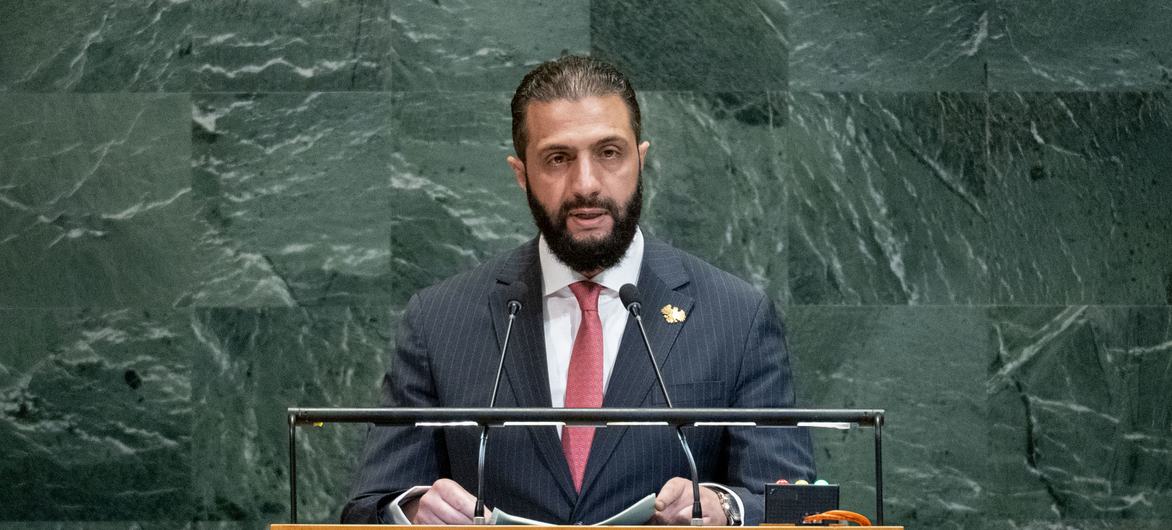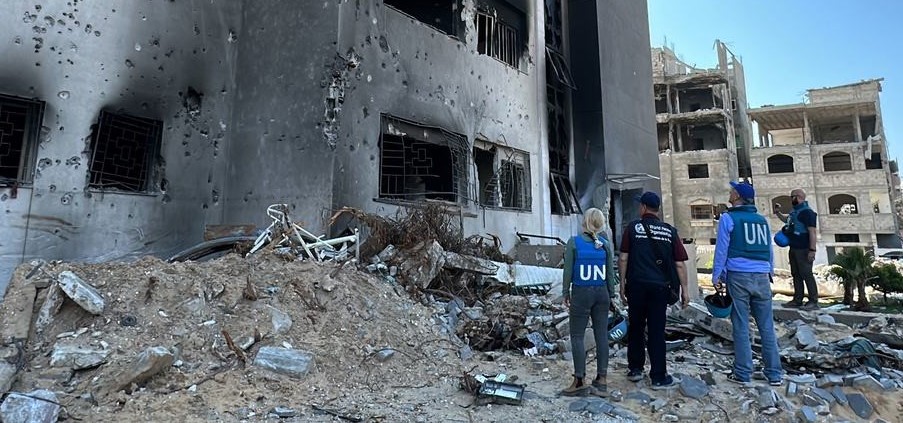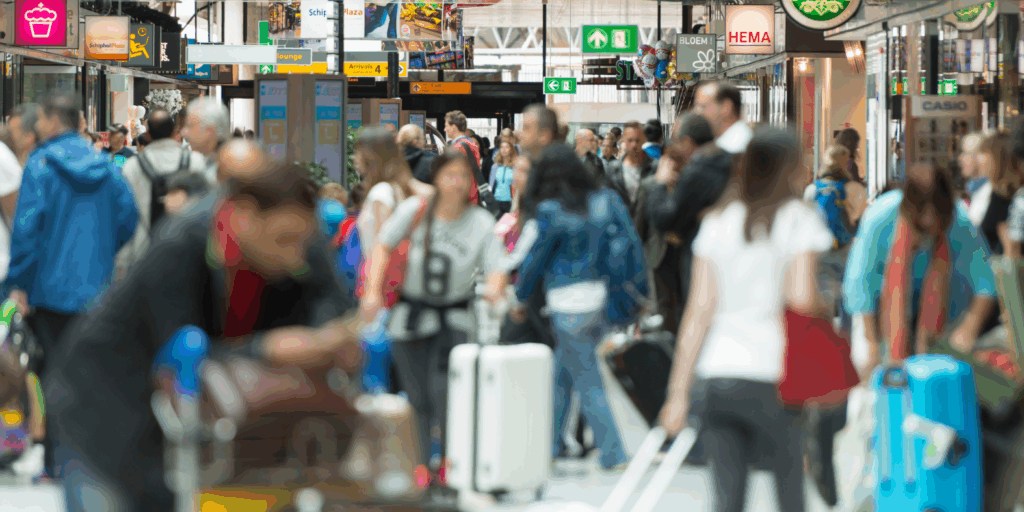On Nov. 6, the UN Security Council lifted sanctions on Syrian President Ahmed al-Sharaa. The move came months after President Trump rescinded Executive Branch sanctions in June, saying, “Now it’s their time to shine… Show us something special.” The line drew attention in Washington. To Syrians, it sounded like a test. And whether they pass or fail will hinge on engagement from the international community – especially the United States – to back those words with meaningful support.
“Now is [the time for Syria] to shine… Show us something special.”
President Trump, speaking on lifting sanctions on Syria
That test took on new urgency during al-Sharaa’s recent visit to Washington — the first-ever White House meeting with a Syrian leader and his second historic milestone in as many months, following his appearance at the UN General Assembly, the first by a Syrian president in nearly six decades. Trump’s unusually warm praise, paired with a table that included senior U.S. officials and even Turkey’s foreign minister, suggested Washington was feeling out what a new relationship with Damascus might look like — and whether its rhetoric about helping Syria “shine” would translate into real investments in stability.
Fourteen years of war have reduced seventy percent of the country’s infrastructure to rubble and pushed one in nine people below the poverty line. Before the conflict, Syria’s economy was worth roughly $67 billion. Adjusted for inflation, it should be more than double that today. Instead, last year its real GDP stood at just US$13 billion – an 80 percent collapse.
And yet, a few streets away from bombed-out blocks in the country’s capital, a different picture of Syria emerges. The souq I visited last month in Damascus hummed with life, cafés spilling onto sidewalks. Children headed off to one of the more than 530 schools that reopened this year. The scars of war are everywhere, but so too is the spirit of resilience.
The future of the country hangs in the balance between these versions of Syria – one in rubble and one in renewal. Without a decisive surge of resources and partnerships, that fragile progress may collapse.
With the right support, it could take root and transform the region’s trajectory. A Syria able to provide basic services and jobs not only prevents the outflow of refugees and inflow of adversaries, but represents an opportunity for economic development and stability that benefits everyone – including the U.S – with private sector at the helm.
This is Syria’s perishable moment.
A Syria able to provide basic services and jobs… represents an opportunity for economic development and stability that benefits everyone – including the U.S – with private sector at the helm.
For more than a decade, Washington has provided nearly US$50 billion into life-saving humanitarian aid in the country. That commitment has kept people alive – shelter, food rations and emergency medical care – but it was never designed to last forever. Today, the needs are shifting. Families who once sought shelter now seek steady paychecks and food security.
The good news is that a partner already stands ready to help seize this moment: the United Nations.
Unlike short-term aid groups, UN agencies are built for this exact stage of transition. The UN’s comparative advantage is not parachuting in with parallel systems, but wiring core public functions back into place – powering water plants, digitizing health services, rehabilitating schools and restoring municipal functions. They work through local networks and can partner with diaspora talent and leading global NGOs to build capacity that lasts rather than quick fixes that fade.
UN agencies are built for this exact stage of transition… not parachuting in with parallel systems, but wiring core public functions back into place.
Take food subsidies. Each day, the World Food Programme provides bread to two million Syrians. “Food security is national security,” a WFP official told me on that same trip to Damascus. Bread is more than calories; it’s a deterrent against militia recruitment, communal violence and forced migration.
And it’s not only the big programs. The UN’s strength lies equally in the small interventions that add up. A $500 grant enables a farmer to restart a market. Solar panels keep the doors of a clinic open. These modest, medium-term measures mark the difference between a country stuck in perpetual emergency and one able to stand on its feet.
The UN is also a critical resource for the more than one million Syrians who have returned home to rebuild. These returnees bring capital, skills and a willingness to invest in the future of their country – only if the basic conditions of stability are there.
The upcoming Trump-al-Sharaa meeting underscores that alignment. It represents an opportunity for the United States to shape Syria’s post-war trajectory, to secure cooperation against lingering terrorist threats and to channel reconstruction through transparent, UN-led frameworks that serve both humanitarian and strategic goals.
Washington has a choice. We can drift into another decade of costly humanitarian triage, spending billions to keep people barely afloat. Or we can back a focused UN-led surge that restores the basics, helps refugees go home, fosters business growth and allows America to exit with success.
If helping Syria “shine” is truly a priority of the Administration, now’s the moment. The president’s visit to Washington is not just symbolic; it’s a test of whether we see Syria’s fragile peace as a liability to manage or a chance to lead. Because this perishable moment won’t last – and the UN can help us seize it.
This perishable moment won’t last. The UN can help us seize it.





